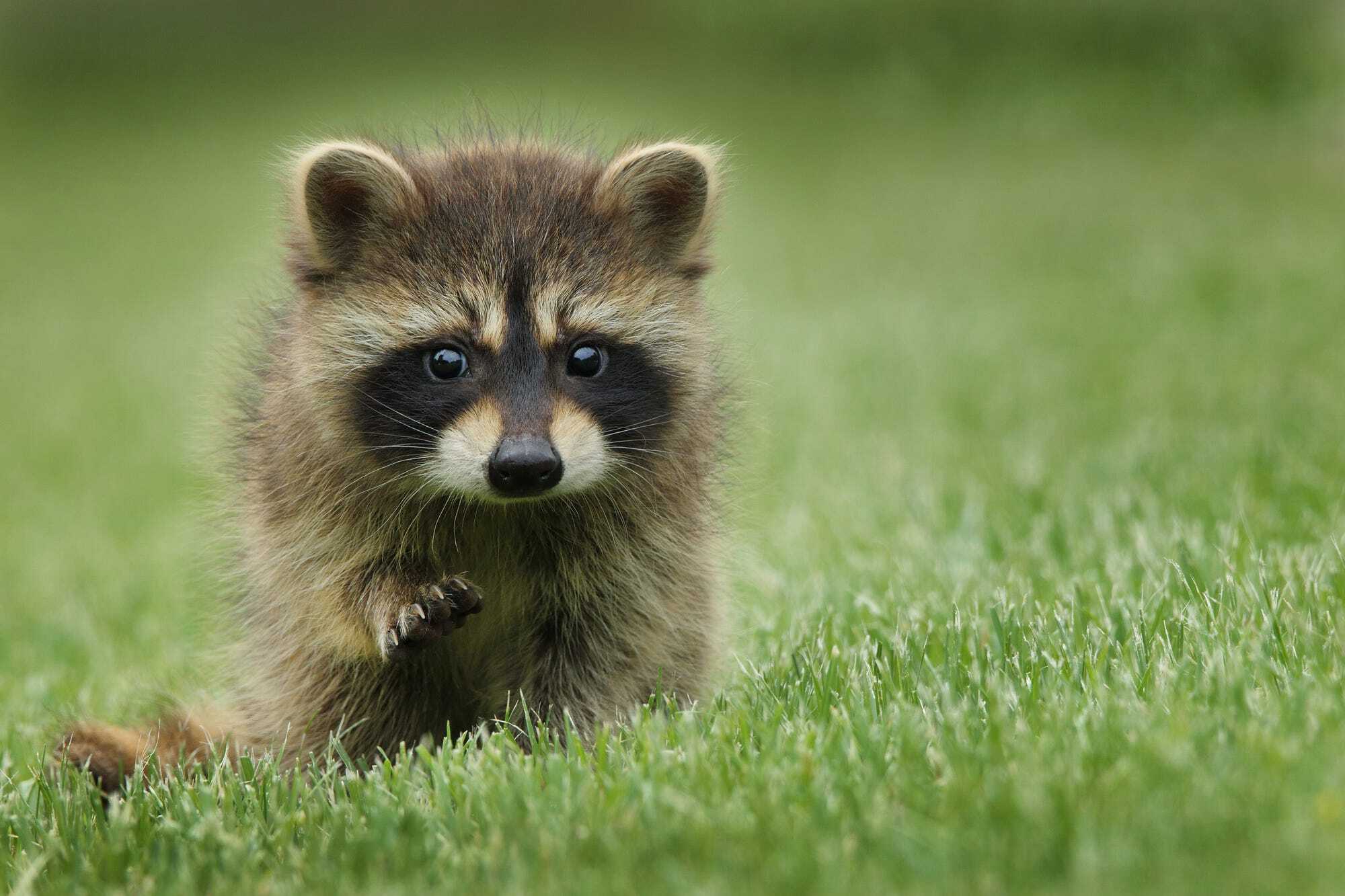
Did you know that raccoons are not native to Germany? These clever critters were introduced to the country in the 1930s and have since made themselves quite at home. German raccoons are now a common sight in forests and even urban areas, adapting remarkably well to their new environment. They are known for their dexterous paws and curious nature, often rummaging through trash bins and gardens. Despite their mischievous reputation, raccoons play a vital role in the ecosystem by controlling insect populations and dispersing seeds. Ready to learn more about these fascinating animals? Here are 35 intriguing facts about German raccoons that will surprise you!
Key Takeaways:
- German raccoons, originally from North America, have thrived in Germany since the 1930s. Their adaptability and resilience make them a unique addition to the country's wildlife.
- Raccoons in Germany impact the environment, human interactions, and conservation efforts. Understanding their behavior and coexisting with them is crucial for their future in the country.
German Raccoons: An Unexpected Resident
Raccoons are native to North America, but did you know they have a thriving population in Germany? These furry creatures have adapted remarkably well to their new environment. Let's dive into some fascinating facts about German raccoons.
-
Raccoons were introduced to Germany in the 1930s. A fur farm in Germany imported raccoons from North America. Some escaped, leading to the establishment of a wild population.
-
The first escape happened in 1934. Two raccoons escaped from a fur farm in Hessen, Germany. This event marked the beginning of the raccoon population in the country.
-
Another escape occurred during World War II. In 1945, a bomb hit a fur farm near Berlin, releasing more raccoons into the wild.
-
Raccoons are now found all over Germany. From urban areas to forests, these adaptable animals have spread across the country.
-
They are particularly common in Hessen. This region has the highest concentration of raccoons in Germany.
Adaptation and Behavior
Raccoons are known for their intelligence and adaptability. In Germany, they have shown remarkable resilience and resourcefulness.
-
German raccoons are nocturnal. They are most active at night, searching for food and exploring their surroundings.
-
They have a varied diet. Raccoons eat fruits, vegetables, insects, small animals, and even human food waste.
-
Raccoons are excellent climbers. They can easily scale trees, buildings, and fences to find food or escape predators.
-
They use their front paws like hands. Raccoons have dexterous front paws, allowing them to manipulate objects and open containers.
-
Raccoons are solitary animals. They prefer to live alone, except during the breeding season or when raising young.
Impact on the Environment
The presence of raccoons in Germany has had both positive and negative effects on the environment.
-
Raccoons help control insect populations. By eating insects, they help keep these populations in check.
-
They can be a nuisance to humans. Raccoons often raid garbage bins and gardens, causing damage and spreading waste.
-
Raccoons compete with native species. Their presence can put pressure on native animals, leading to changes in local ecosystems.
-
They can spread diseases. Raccoons are carriers of diseases such as rabies and canine distemper, which can affect other animals and humans.
Reproduction and Lifespan
Understanding the reproductive habits and lifespan of raccoons can provide insight into their population growth and management.
-
Raccoons breed once a year. The breeding season typically occurs in late winter or early spring.
-
Females give birth to 2-5 kits. The young are born blind and helpless, relying on their mother for care.
-
Kits stay with their mother for about a year. During this time, they learn essential survival skills.
-
Raccoons can live up to 5 years in the wild. In captivity, they can live much longer, sometimes reaching 20 years.
Human Interaction and Management
As raccoons become more common in urban areas, managing their interactions with humans has become increasingly important.
-
Raccoons are protected by law in Germany. Hunting and trapping them is regulated to ensure their populations remain stable.
-
Urban raccoons are a growing concern. They often enter homes and buildings, causing damage and posing health risks.
-
Public awareness campaigns are in place. These campaigns educate people on how to coexist with raccoons and prevent conflicts.
-
Raccoon-proofing measures are recommended. Securing garbage bins, sealing entry points, and removing food sources can help reduce raccoon problems.
Fun and Quirky Facts
Raccoons have some unique and amusing traits that make them fascinating creatures.
-
Raccoons are known for "washing" their food. They often dip their food in water before eating, a behavior known as "dousing."
-
They have a strong sense of touch. Raccoons rely heavily on their sense of touch to find and manipulate food.
-
Raccoons are curious by nature. Their inquisitive behavior often leads them to explore new environments and objects.
-
They communicate using a variety of sounds. Raccoons use chirps, growls, and purrs to communicate with each other.
-
Raccoons have a distinctive black "mask." This facial marking helps reduce glare and improve their night vision.
Conservation and Future Prospects
The future of raccoons in Germany depends on effective management and conservation efforts.
-
Raccoons are considered an invasive species. Their impact on native wildlife and ecosystems is a concern for conservationists.
-
Efforts are being made to monitor raccoon populations. Researchers track their numbers and movements to better understand their impact.
-
Public involvement is crucial. Citizens can help by reporting raccoon sightings and following guidelines to prevent conflicts.
-
Raccoons have adapted well to urban environments. Their ability to thrive in cities poses unique challenges for wildlife management.
-
Education is key to coexistence. Teaching people about raccoons and how to live alongside them can reduce negative interactions.
-
Raccoons play a role in biodiversity. Despite being non-native, they contribute to the diversity of species in Germany.
-
Future research is needed. Continued study of raccoons will help develop better management strategies.
-
Raccoons are here to stay. Their adaptability and resilience mean they will likely remain a part of Germany's wildlife for the foreseeable future.
Fascinating Creatures
German raccoons are more than just cute faces. These nocturnal animals have adapted well to urban environments, making them a common sight in cities. Their intelligence and dexterity allow them to open containers and find food in surprising places. Despite being non-native, they've become a part of Germany's wildlife, showing how adaptable nature can be.
Their history in Germany dates back to the 1930s, when they were introduced for hunting. Since then, their population has grown, leading to both admiration and challenges. They play a role in the ecosystem by controlling insect populations but can also be a nuisance when they raid garbage bins.
Understanding these creatures helps us coexist with them better. Whether you find them charming or troublesome, there's no denying their impact on German wildlife. Next time you spot one, you'll know a bit more about these fascinating animals.
Frequently Asked Questions
Was this page helpful?
Our commitment to delivering trustworthy and engaging content is at the heart of what we do. Each fact on our site is contributed by real users like you, bringing a wealth of diverse insights and information. To ensure the highest standards of accuracy and reliability, our dedicated editors meticulously review each submission. This process guarantees that the facts we share are not only fascinating but also credible. Trust in our commitment to quality and authenticity as you explore and learn with us.


